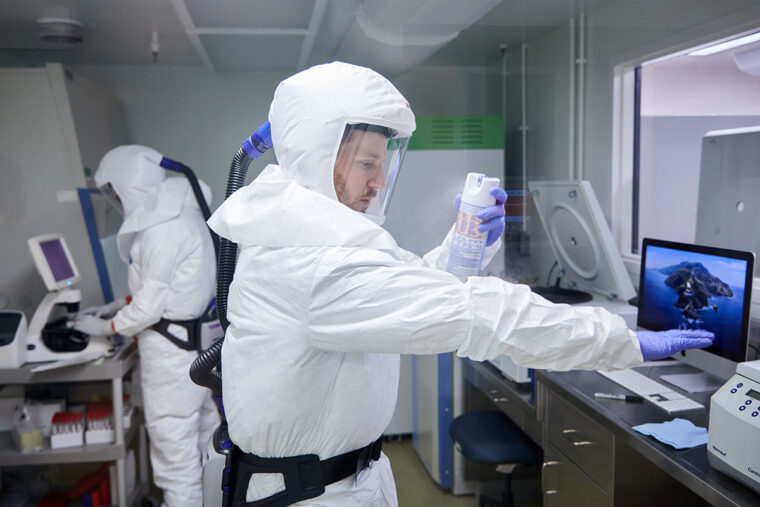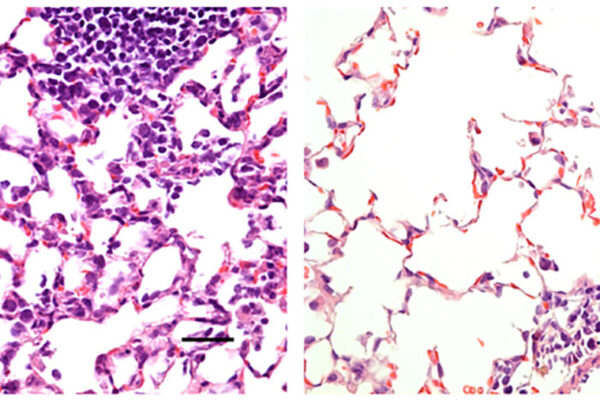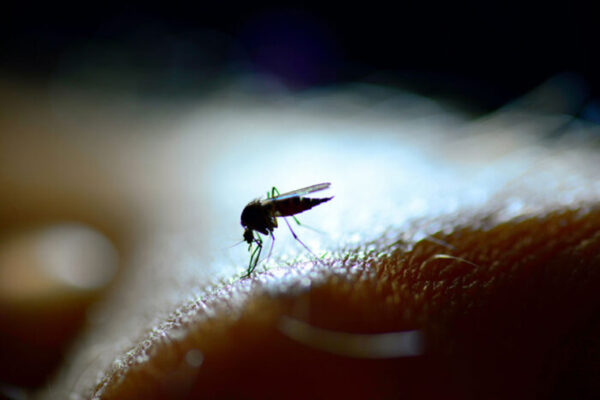The global effort to quickly develop drugs and vaccines for COVID-19 has been hampered by limited numbers of laboratory mice that are susceptible to infection with SARS-CoV-2, the virus that causes COVID-19. Now, researchers at Washington University School of Medicine in St. Louis report they have developed a mouse model of COVID-19 that replicates the illness in people. Further, the same approach could be adopted easily by other scientists to dramatically accelerate the testing of experimental COVID-19 treatments and preventives.
The mouse model is described in a paper published online June 10 in the journal Cell. In addition to drug and vaccine testing, scientists can use the model with mice bred to develop health conditions such as obesity, diabetes or chronic lung disease to investigate why some people develop life-threatening cases of COVID-19 while others recover on their own.
“There’s been a huge push to develop vaccines and therapeutics as quickly as possible, and since animal models have been limited, these investigational drugs and vaccines have been put directly into humans, and many of them haven’t panned out,” said principal investigator Michael S. Diamond, MD, PhD, the Herbert S. Gasser Professor of Medicine and an expert on viral infections. “Mice are useful because you can study a large number of them and observe the course of the disease and the immune response in a way that is hard to do in people. It would be more cost-effective and efficient and safer for people if we could get more information about how these potential drugs and vaccines work and how effective they are before we move to more challenging non-human primate and ultimately human studies.”
Mice do not naturally get infected with the virus that causes COVID-19. To infect people, the virus latches onto a protein called angiotensin converting enzyme-2 (ACE2) on the surface of cells in the respiratory tract. But the human ACE2 protein is different from the mouse ACE2 protein, and the virus is unable to attach to the mouse version.
The virus that caused the SARS epidemic in 2003 is closely related to the one causing the COVID-19 pandemic, and the SARS virus also infects cells by latching onto the human ACE2 protein. During the SARS epidemic, researchers created a strain of genetically modified mice with the human ACE2 protein so they could study SARS. After the epidemic ended, however, interest in SARS waned and the mouse colonies were closed. The emergence of COVID-19 earlier this year triggered a frantic rush to begin breeding the mice again, but even now there are not nearly enough mice for all of the researchers who want to study the disease and to test potential vaccines and therapeutics.
Diamond, who previously had led an effort to develop a mouse model of Zika infection, realized they needed a faster way to obtain mice that could be used for COVID-19 studies. Diamond and colleagues — including co-first authors Ahmed Hassan, DVM, PhD, and Brett Case, both postdoctoral researchers, and Emma Winkler, an MD/PhD graduate student, as well as several other key members of the COVID-19 team from Diamond’s laboratory — decided to introduce the human ACE2 protein into mice temporarily. To accomplish this, they inserted the gene for human ACE2 into a mild respiratory virus known as an adenovirus. They also removed genes that the adenovirus needs to replicate, so the virus could infect cells once but not multiply. Then, the researchers infected mice with the modified adenovirus. The animals produced human ACE2 in their respiratory tracts for a few days, making them vulnerable to infection with the virus that causes COVID-19.
To see whether mice develop an illness similar to the one in people, the researchers infected mice with the modified adenovirus, and then five days later gave them the COVID-19 virus through the nose. The virus quickly spread along the respiratory tract and especially to the lungs, where it replicated to high numbers and caused pneumonia with marked inflammation, much as it does in people. The researchers also found lower levels of virus in the heart, spleen and brain — all organs that can be targets of the virus in people. The mice lost 10% to 25% of their body weight during their illnesses but ultimately recovered.
“The mice develop a similar lung disease to what we see in humans,” said Diamond, who is also a professor of molecular microbiology, and of pathology and immunology. “They get quite sick for a while but eventually recover, like the vast majority of people who get COVID-19. You can use this technique with almost any strain of laboratory mouse to make them susceptible to SARS-CoV-2 and then do whatever kind of study you want: test vaccines or drugs, study the immune response, and many other things related to how the virus causes disease.”
The model also can be used to better understand the factors that put some people at risk of severe COVID-19 disease. Advanced age, male sex, and conditions such as obesity, diabetes, and heart, kidney or lung disease all increase risk of severe COVID-19 for reasons that are not fully understood.
“It would be easy to study, for example, older mice or obese mice and see how they respond to infection,” Diamond said. “I’d expect that they would do substantially worse, but the real question is why. Do they have more virus in the early stages? Is their condition weakening the immune response, or perhaps exacerbating a detrimental inflammatory response? With this model, we can begin to look at some of those factors that are very hard to study in people.”
Hassan AO, Case JB, Winkler ES, Thackray L, Kafai NM, Bailey AL, McCune BT, Fox JM, Chen RE, Al Soussi WB, Turner JS, Schmitz AJ, Lei T, Shrihari S, Keeler SP, Fremont DH, Greco S, McCray PB, Perlman S, Holtzman MJ, Ellebedy AH, Diamond MS. A SARS-CoV-2 infection model in mice demonstrates protection by neutralizing antibodies. Cell. June 10, 2020. DOI: 10.1016/j.cell.2020.06.011
This study was supported by the National Institutes of Health, contract numbers 75N93019C00062 and HHSN272201400008C and grant numbers R01AI127828, P01AI60699, R21AI139813, U01AI141990 and F32AI138392; the Defense Advanced Research Project Agency, grant number HR001117S0019; and the Helen Hay Whitney Foundation.
Washington University School of Medicine’s 1,500 faculty physicians also are the medical staff of Barnes-Jewish and St. Louis Children’s hospitals. The School of Medicine is a leader in medical research, teaching and patient care, ranking among the top 10 medical schools in the nation by U.S. News & World Report. Through its affiliations with Barnes-Jewish and St. Louis Children’s hospitals, the School of Medicine is linked to BJC HealthCare.
Originally published by the School of Medicine
WashU Response to COVID-19
Visit coronavirus.wustl.edu for the latest information about WashU updates and policies. See all stories related to COVID-19.



